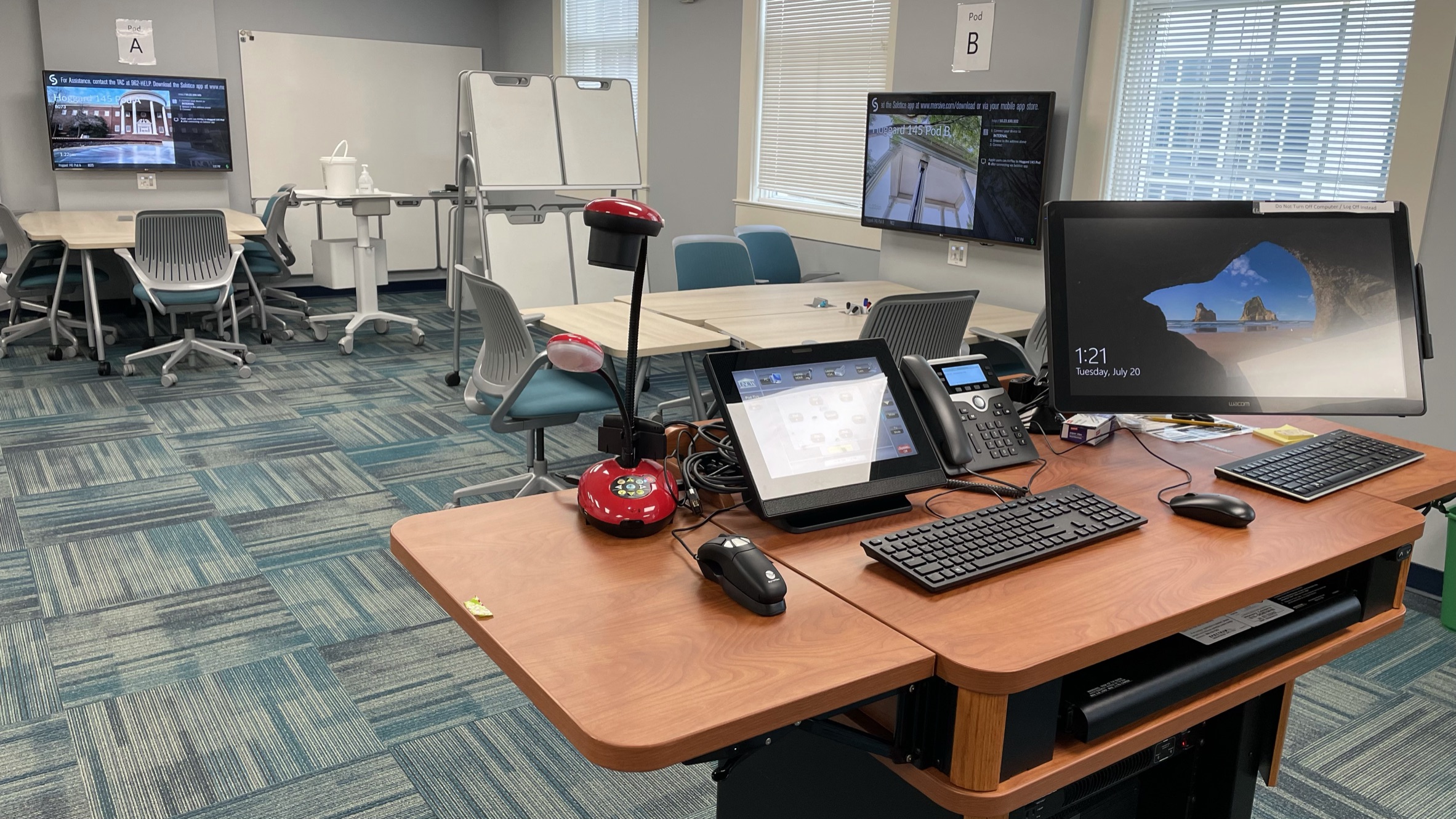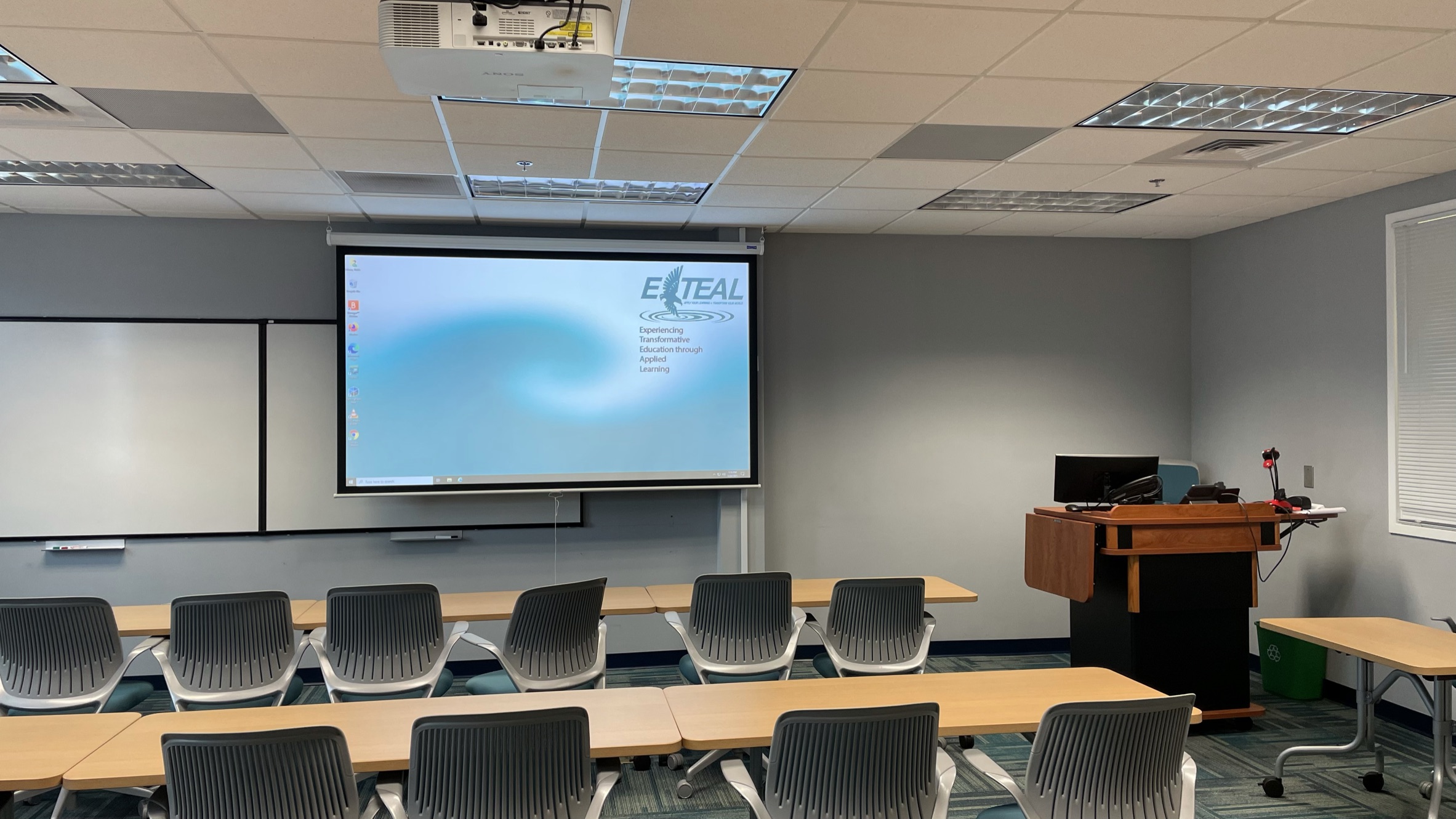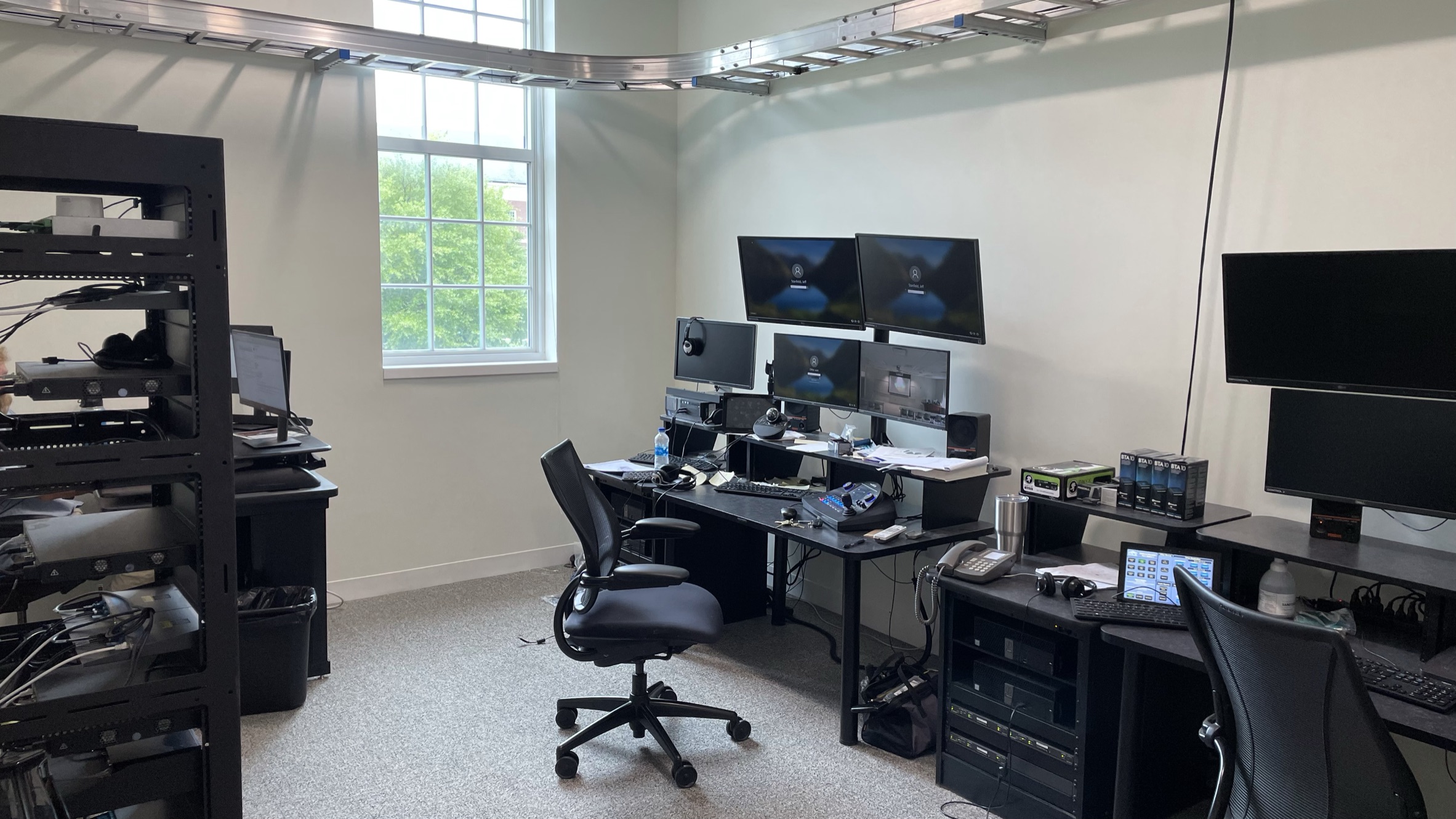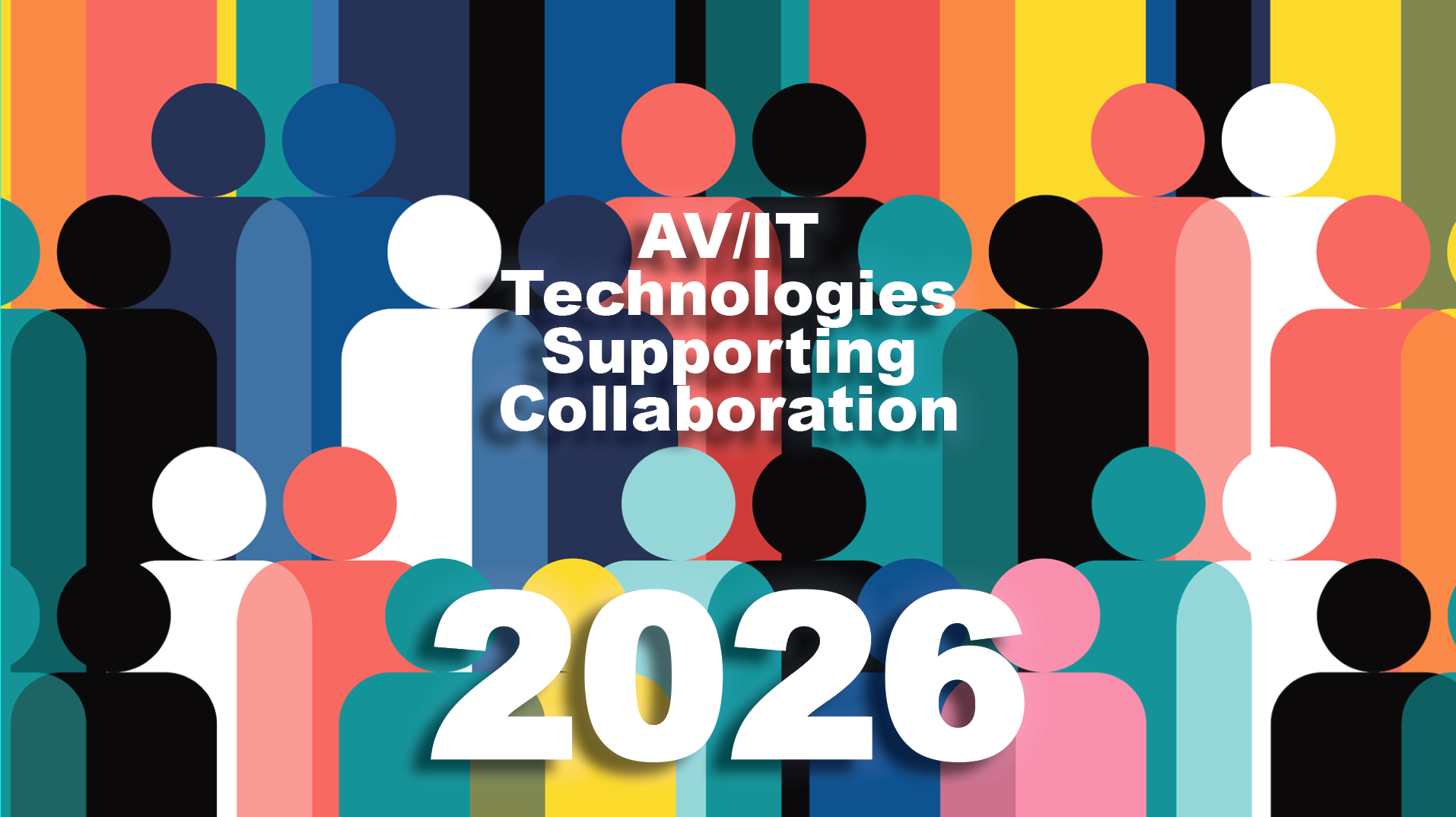Spotlight on the University of North Carolina – Wilmington – 8 AV/IT Tech Directors Share: Fall 2021 – The Hybrid/HyFlex Higher Ed Campus
For the fall 2021 semester, 23.7 percent of courses at the University of North Carolina – Wilmington will be fully online, while 9.8 percent will be hybrid or HyFlex.

AV Technology content director Cindy Davis sat down with the AV/IT directors from eight universities to learn how they are approaching the 2021–22 school year. Some are returning to pre-pandemic status with few reconfigured classrooms for hybrid learning, others are all-in with hybrid, or HyFlex modalities, while others are in transition and planning for the future.
We’ve created a series of spotlights that provide an in-depth conversation with university AV/IT directors, which will be posted here on AVNetwork throughout September.
For a snapshot of all eight universities, plus industry thought leadership, and an extensive list of products for the hybrid and HyFlex classroom, download The Technology Manager's Guide to Fall 2021: The Hybrid/HyFlex Higher Ed Campus.
Spotlight on University of North Carolina – Wilmington

Robb Mann, CTS-I
Manager – Integrated Educational Technologies, ITS,
Q: Pre-pandemic, what percentage of classes (if any) were set up as hybrid or HyFlex? What are plans for fall classes?
RM: Pre-pandemic, very few courses were hybrid prior to the pandemic, and there were no HyFlex that we knew of.
We expect to have 66.5 percent of all classes in-person. In the semester immediately preceding the pandemic, that number was around 87 percent. We anticipate that number to continue rising as student demand starts putting pressure for more online experiences.
There will be 23.7 percent of courses fully online, with 9.8 percent being hybrid or HyFlex. We don’t actually have a breakdown as to which percentage of classes are HyFlex out of that 9.8 percent number, as we don’t categorize for that modality in tracking classes at the university level currently. Prior to the pandemic, there were no HyFlex classes, and almost all the online classes were fully online.
A daily selection of features, industry news, and analysis for tech managers. Sign up below.

Q: Have in-person classes resumed?
RM: In-person classes resumed in fall of 2020, but with social distancing protocols in place which severely restricted the number of people allowed in a space. So, while there were in-person classes, there were fewer of them than pre-pandemic, and the ones that did take place had a limited seating capacity. For example, no in-person class exceeded 50 seats, regardless of the space available in our large auditoriums. Most rooms ran at about a third of their normal seating capacity.
The social distancing restrictions have been lifted for the coming Fall 2021 semester, so operations are returning to a pre-pandemic “normal.” All general instructional spaces have fixed computers, laptop connections, and projectors for in-class presentations. A third of our classrooms have additional infrastructure to allow synchronous streaming (including a Vaddio PTZ camera, Shure MXA910 microphones, confidence monitor, etc). These latter locations will allow for hybrid and/or HyFlex classes.

Q: In what ways is your department gearing up for the fall different than if the pandemic not happened?
RM: We’re eerily in about the same place with regards to classroom prep. There are some new components that need to be put through their paces pre-semester, but the process is basically the same. We have increased our distance education staffing levels, having added a full-time position in January as well as increasing our student/temp budget and staffing.
Q: Have more classrooms been outfitted with remote technologies specifically because of the pandemic?
RM: We outfitted classrooms with remote technologies about a year ago. We designed a distance education room that was centered around Zoom (i.e. all content feeds to the instructor’s computer for broadcast, rather than to a traditional control room that is then routed), and that has proven to be an effective solution for the campus. Beam array mics—the Shure MXA910 in particular—were an important part of the design as they allow us to pick up all students in the room while limiting outside ambient noise. The mics connect to Biamp Tesira Forte units, giving us really clear audio throughout the room without having to worry about feedback. We typically have dual monitors on the desktop, with the primary monitor mirroring to the projector and a confidence monitor on the back or near side wall that mirrors the secondary monitor. This allowed the instructor to see all of the remote students while facing the class rather than having to look down or away to include the far-side students. Video was captured through a Vaddio PTZ camera that had presets on the touchscreen. We deliberately did not give full pan/tilt/zoom control on the panel so as to keep it as simple as possible for the instructors.
This system has worked out really well so far. The setup allows instructors to come in, open Zoom, and then start teaching without having to worry about the AV side of things. It just works. These rooms are flexible enough to allow for traditional distance education experiences, as well as hybrid and HyFlex ones.
Q: Key challenges?
RM: There were a few challenges when we had to pivot to fully online at the beginning of the pandemic:
First, there was the pedagogical shift that had to happen in a very short time, where instructors who had always taught face-to-face had to suddenly shift all of their content to an online format in a two-week window. Students also had to make the same transition to learning from home. The next semester was a little easier, but with a majority of classes still online, there was still adaptation necessary.
Second, there were the technological challenges. With the original pivot, campus was closed down, so we had to make sure every single instructor had a computer, webcam, and any other necessary tools that they needed (such as our mathematics department needing doc cams). We were able to then plan and institute upgrades to classrooms for the following semesters (under social distancing constraints), but that proved very challenging from a practical aspect. We basically had three and a half months to design, procure, install, and commission additional distance education-equipped classrooms in order to meet the needs of the campus. We went from having 12 distance education-equipped rooms to 137 overnight, and that was quite an undertaking.
Lastly, there was the challenge of marrying the two above, as faculty and students had to learn how to use the technology tools available to them. Everyone had to learn how to Zoom and/or use Teams in a very short window, digitize content for online delivery, et cetera. Once we opened campus, faculty had the additional challenge of learning the new distance education technology in the classrooms as well. Fortunately, we kept the operation of these spaces simple, and with faculty having already been thrown to the wolves and forced to use an online collaborative platform during the pivot semester, it actually went pretty smoothly. Since they had already learned to operate Zoom, it was just a matter of learning a few basic button pushes instead of having to teach it all in one go, as had happened before.
“Keep it simple.” To keep faculty comfortable and instruction seamless, the advice from Mann is to have no more than three button presses for any AV function in the classroom.
Robb Mann
Q: Do you have advice for your peers on training faculty to use new hybrid classroom technologies?
RM: Keep it simple; no more than three button presses to do anything. While as an AV tech I’d love to have the full PTZ controls on the touchscreen, keeping it down to a few presets really made the faculty feel comfortable. In a couple of instances where people wanted something other than the default views, we were able to very quickly program in extra looks and preset buttons, which made them happy. Standardizing on equipment choices has also made it a lot easier to support the increased technological footprint. We intentionally purchased a few backups of all system components, so in the event of a failure in a room we can hot swap the part out and keep the room up. This was a little challenging in the mad scramble to get equipment, but we were able to make it happen.
Download The Technology Manager's Guide to Fall 2021: The Hybrid/HyFlex Higher Ed Campus.
Spotlight on 8 AV/IT Tech Directors
>> Spotlight on Boston University
>> Spotlight on Brandeis University
>> Spotlight on The Brookings Institution
>> Spotlight on Indiana University
>> Spotlight on University of Massachusetts Lowell
>> Spotlight on the University of North Carolina – Wilmington

Cindy Davis is the brand and content director of AV Technology (AVT). She was a critical member of the AVT editorial team when the title won the “Best Media Brand” laurel in the 2018 SIIA Jesse H. Neal Awards. Davis moderates several monthly AV/IT roundtables and enjoys facilitating and engaging in deeper conversations about the complex topics shaping the ever-evolving AV/IT industry. She explores the ethos of collaboration, hybrid workplaces, experiential spaces, and artificial intelligence to share with readers. Previously, she developed the TechDecisions brand of content sites for EH Publishing, named one of the “10 Great Business Media Websites” by B2B Media Business magazine. For more than 25 years, Davis has developed and delivered multiplatform content for AV/IT B2B and consumer electronics B2C publications, associations, and companies. A lifelong New Englander, Davis makes time for coastal hikes with her husband, Gary, and their Vizsla rescue, Dixie, sailing on one of Gloucester’s great schooners and sampling local IPAs. Connect with her on LinkedIn.
